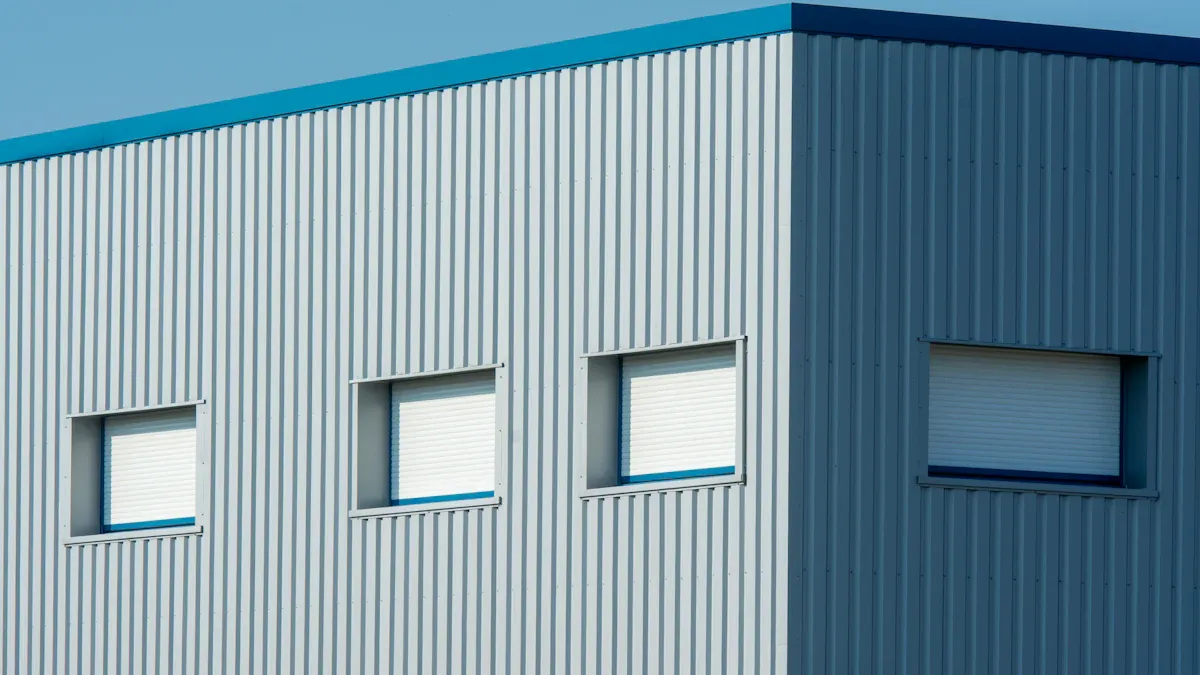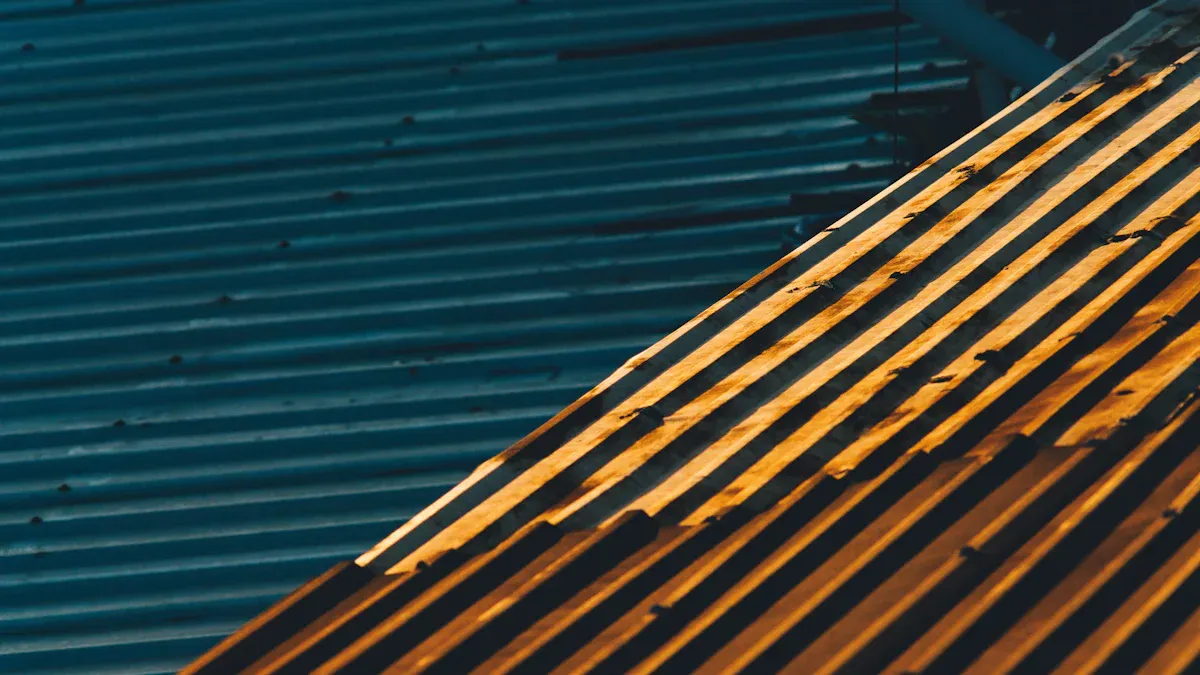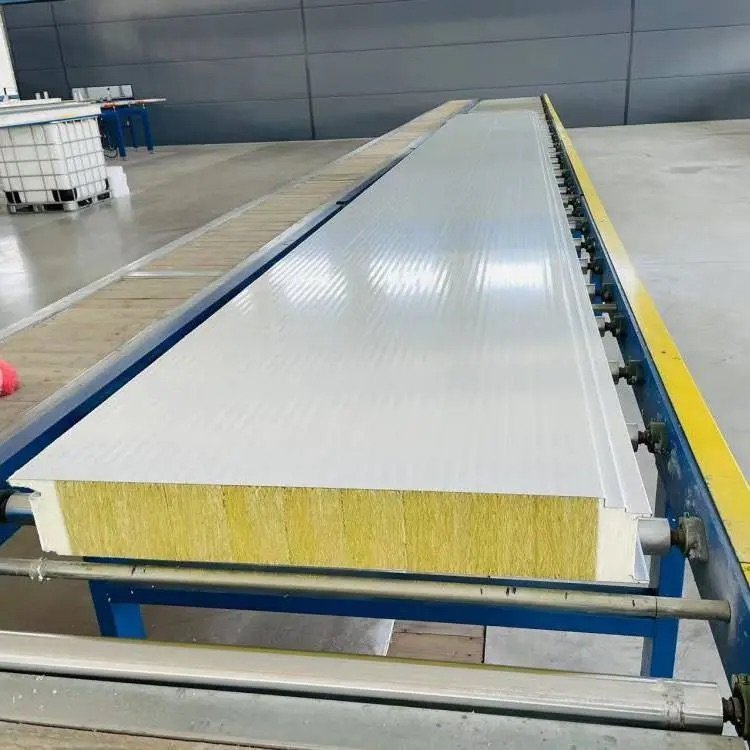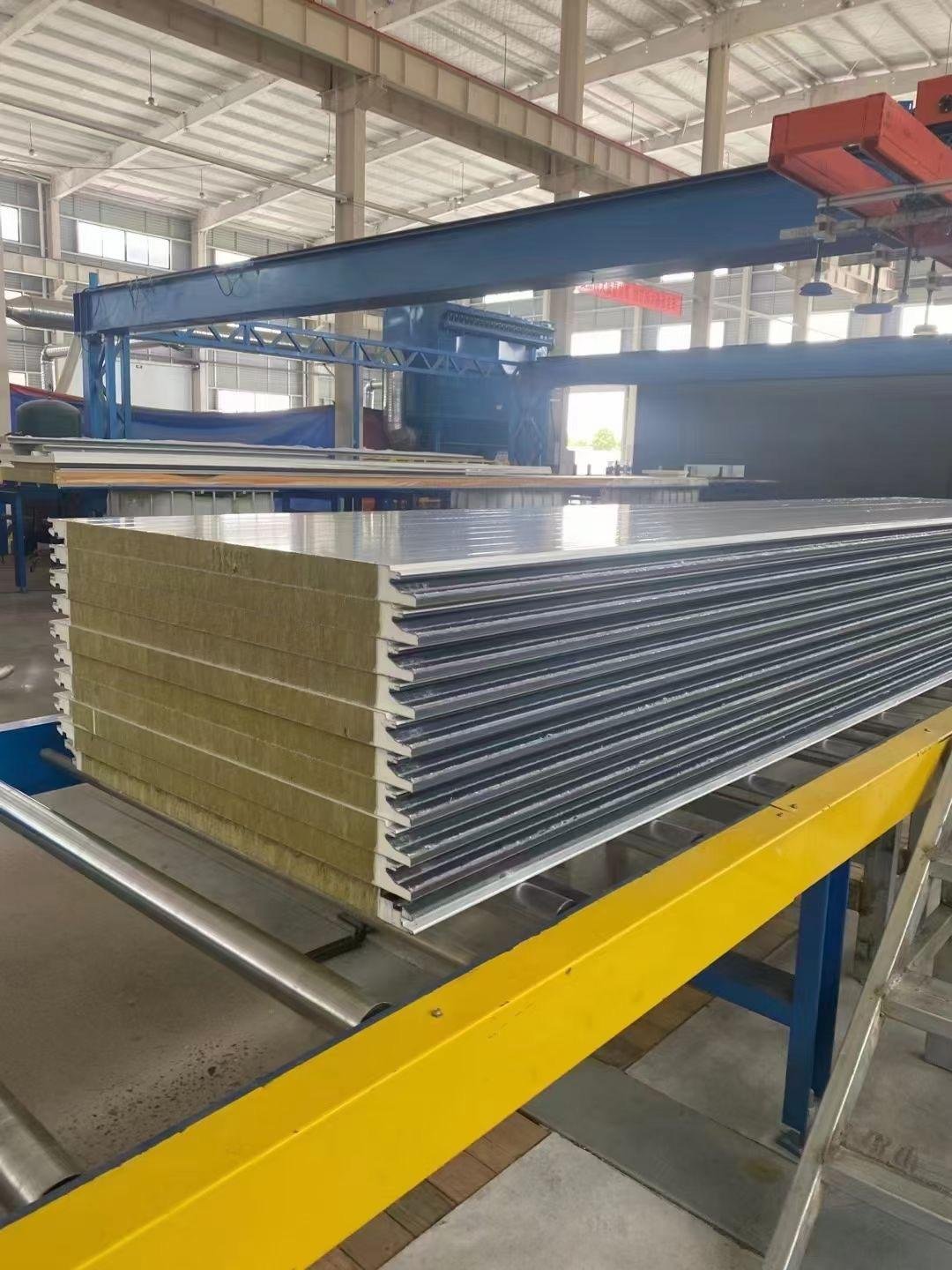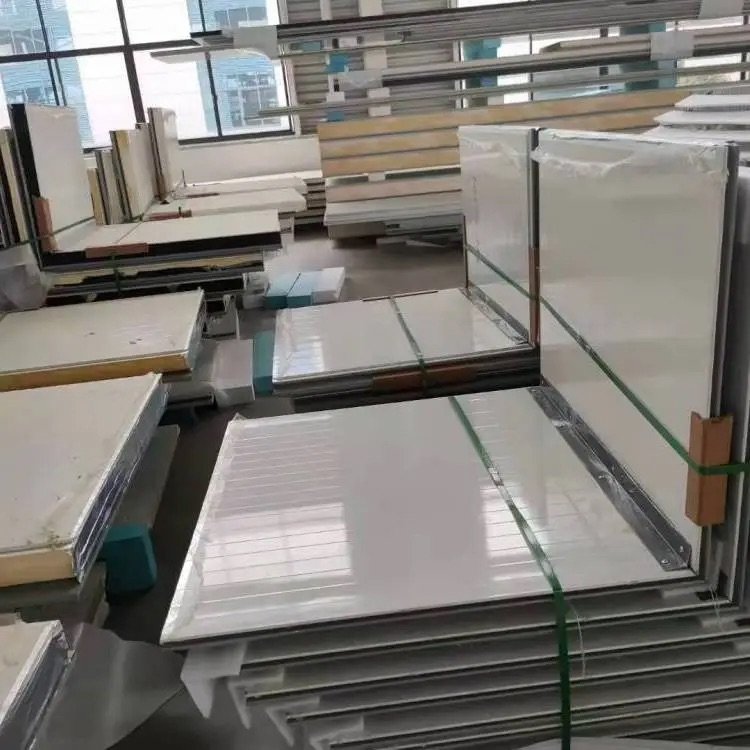
Keeping PIR insulation safe during work helps it last longer. While PIR insulation is strong, it can get damaged if you walk on PIR insulation carelessly. Damage lowers its ability to keep heat in and raises repair costs.
Walking on PIR insulation without support can cause cracks or dents. For example, PIR boards can handle 120 kPa pressure at 10% compression. A 100 mm x 100 mm piece holds about 122 kg only if weight is spread out evenly. Without care, even light walking can weaken it.
To keep PIR insulation safe, cover it with plywood or use walkboards to spread weight when you need to walk on PIR insulation. Avoid heavy loads and give proper support to protect it.
Key Takeaways
Use plywood or OSB boards to walk on PIR insulation. This spreads weight and stops damage.
Look at PIR insulation often for cracks or dents. Finding problems early helps fix them fast.
Walk on PIR insulation as little as possible. Fewer steps mean less chance of damage.
Don’t put heavy tools right on PIR insulation. Use platforms to spread the weight and keep it safe.
Keep extra PIR boards nearby for quick fixes. This helps you repair damage right away.
Understanding PIR Insulation
What is PIR Insulation?
PIR, short for Polyisocyanurate, is a stiff foam used in buildings. It is made by mixing polyol and isocyanate, which create a foam with tiny closed cells. This design makes PIR very good at keeping heat in and lasting a long time. PIR comes in different forms, like foam sheets for HVAC systems or panels for walls and roofs.
Tip: PIR insulation is light, so it’s simple to carry and set up. It also saves energy during transport.
Key Properties of PIR Insulation
PIR insulation is popular because of its special features, making it great for saving energy in buildings.
Thermal Performance: PIR keeps heat in well, with a thermal conductivity of 0.022–0.023 W/(m·K). This is 30% better than EPS insulation, helping save energy.
Fire Resistance: PIR foam has isocyanurate rings that make it resist fire better than PUR. Its heat release is 27 MJ/kg, which is less than polystyrene materials.
Durability: PIR stays stable in temperatures from 0 to 200 °C. It doesn’t melt, so it works well for a long time.
Moisture Resistance: Its closed cells stop water and vapor from getting in, keeping it safe in wet areas.
Lightweight Design: PIR is not heavy, so thinner layers are needed. This saves materials and makes installation easier.
Property | Performance Details |
|---|---|
Thermal Conductivity | 0.022–0.023 W/(m·K), better than EPS and close to aerogel slabs. |
Specific Heat Capacity | 1300–1500 J/(kg·K), stores heat better than EPS. |
Thermal Stability | Stable up to 200 °C, doesn’t melt, only dries out. |
Infrared Absorption Rate | Lower than graphite EPS, keeps surface cooler under heat. |
Vulnerabilities When You Walk on PIR Insulation
Walking on PIR insulation without care can harm it. PIR boards can handle about 120 kPa pressure at 10% compression. A 100 mm x 100 mm board can hold around 122 kg if the weight is spread evenly. But uneven weight or heavy loads can cause cracks or dents.
Note: PIR insulation placed on wooden joists is weaker than on flat concrete. Always check how it’s installed before stepping on it.
These weaknesses can damage the insulation and make it less effective at keeping heat in. Taking care of PIR insulation during work is important to keep it working well for a long time.
Risks of Walking on PIR Insulation
Damage to Insulation Boards
Walking on PIR insulation without care can harm the boards. The foam inside is strong but not made for heavy pressure. Stepping directly can cause cracks, dents, or breaks. These problems weaken the insulation’s strength. Over time, gaps or uneven spots may form, making it less effective.
Tip: Check the boards after walking on them for any damage.
Reduced Thermal Performance
Broken PIR insulation doesn’t hold heat as well. Cracks and dents let heat escape, raising energy use. Damaged insulation can have higher thermal conductivity, especially in heat and humidity.
Temperature (°C) | Relative Humidity (%) | Thermal Conductivity Increase (%) |
|---|---|---|
50 | N/A | 4.2 |
70 | N/A | 6.4 |
70 | 90 | 22.9 |
For instance, at 70°C and 90% humidity, damaged PIR insulation’s thermal conductivity rises by 22.9%. This means more heat escapes, increasing heating or cooling costs. Keeping insulation safe helps it work properly.
Safety Hazards for Workers
Walking on PIR insulation without support can be unsafe. Boards may not stay stable, especially on uneven surfaces like wooden joists. This can cause slips, falls, or injuries. Damaged boards might even break underfoot, making accidents more likely.
To stay safe, use plywood or walkboards when stepping on PIR insulation. These tools spread weight evenly and lower accident risks.
Protective Measures for Walking on PIR Insulation
Using Protective Coverings
Plywood as a Protective Layer
Plywood is great for keeping PIR insulation safe. Placing plywood sheets on top makes a strong surface to walk on. This spreads your weight evenly, stopping cracks or dents. Plywood is light and simple to use, making it handy for building or repairs.
Tip: Pick plywood sheets at least 12 mm thick for better strength.
OSB Boards for Durability
OSB boards are another good choice. They are tougher than plywood and can take more weight. These boards are perfect for busy areas needing extra strength. Using OSB boards keeps the insulation safe and gives you a steady surface to walk on.
Distributing Weight Evenly
Walkboards or Platforms
Walkboards or platforms help spread your weight when walking on PIR insulation. These tools stop direct pressure, lowering the risk of damage. Wooden planks or special platforms work well for this job.
Avoiding Pressure Points
Don’t step on small spots of the insulation. Small areas can dent or crack, especially on uneven surfaces like wooden joists. Always spread your weight to keep the insulation in good shape.
Avoiding Heavy Loads
Limiting Foot Traffic
Try to reduce how many people walk on PIR insulation at once. Too much walking can harm it. Plan your tasks to avoid extra movement on the insulation.
Prohibiting Heavy Equipment
Never put heavy tools directly on PIR insulation. PIR boards, with 120 kPa strength at 10% compression, can’t handle heavy loads. As per BS EN 826:2013, too much weight can damage the insulation, especially on wooden joists. Use coverings or platforms to hold heavy tools if needed.
Note: Always check how much weight the insulation can handle before using it.
Best Practices for Installation and Maintenance
Correct Ways to Install PIR Insulation
Installing PIR insulation the right way makes it last longer. Always follow the maker’s instructions for the best outcome. First, prepare the surface where the insulation will go. Clean it and make it flat to avoid uneven spots.
Stick the boards using glue or fasteners. For walls, place the boards in a staggered pattern to stop heat loss. On roofs, make sure the boards fit tightly together. Seal all edges with tape or foam to block air leaks.
Tip: Wear gloves and goggles when cutting PIR boards. Foam bits can irritate your skin and eyes.
Checking for Damage Regularly
Checking PIR insulation often helps find problems early. Look for cracks, dents, or gaps in the boards. Focus on areas near joints or where people walk a lot. Damaged insulation won’t keep heat in as well.
Make a checklist for your inspections. Include checking for water damage, loose boards, or wear and tear. Do these checks twice a year or after big construction projects.
Note: Use a flashlight to find hidden damage in dark spots.
Fixing Damaged PIR Insulation
Fixing damaged PIR insulation quickly stops bigger problems. Fill small cracks or dents with spray foam. Cut off extra foam after it hardens. Replace badly damaged boards to keep the insulation working well.
If water gets into the insulation, take out the wet parts right away. Wet PIR boards lose their ability to keep heat in and can grow mold. Make sure the area is dry before putting in new boards.
Reminder: Keep extra PIR boards ready for quick fixes.
Maintenance Tips for Longevity
Taking care of PIR insulation helps it last many years. Regular upkeep stops damage and saves money on fixes. Use these tips to keep your insulation in great shape:
Inspect Twice a Year
Check your insulation every six months for cracks or dents. Look closely at joints and areas with lots of walking. Finding issues early makes repairs easier and cheaper.
Tip: Shine a flashlight to find hidden damage in dark spots.
Protect Against Moisture
Water can harm PIR insulation badly. Seal gaps and fix leaks to keep it dry. Replace wet boards quickly to avoid mold and heat loss.Limit Heavy Loads
Don’t put heavy tools directly on the insulation. Too much weight can cause cracks or dents. Use boards or platforms to spread the weight evenly.Clean the Surface
Dust and dirt can collect on insulation over time. Gently clean it with a soft brush or vacuum. Keeping it clean helps prevent damage.
Reminder: Never use water to clean PIR insulation.
Store Extra Boards
Keep extra boards nearby for quick fixes. Replace damaged boards right away. Store them in a dry place to keep them ready to use.
By following these tips, you can keep your PIR insulation working well for a long time. Regular care saves energy and lowers costs over time.
Keeping PIR insulation safe during work helps it last longer. Careless handling can harm it, lowering its ability to keep heat in and raising repair costs. Use plywood or OSB boards to protect it. Walkboards can spread weight evenly, and heavy loads should be avoided.
Check the insulation often for cracks or dents. Replace damaged boards quickly and keep it clean. These steps help keep the insulation strong and save energy over time.
Reminder: Plan your tasks to avoid stepping directly on PIR insulation.
FAQ
What happens if you walk directly on PIR insulation?
Stepping on PIR insulation can cause cracks or dents. These damages make it less effective at keeping heat in. Use boards or platforms to protect it from harm.
Can you repair damaged PIR insulation?
Yes, small cracks can be fixed with spray foam. Replace badly damaged boards. Make sure the area is dry before repairing to keep it working well.
How thick should plywood be to protect PIR insulation?
Plywood should be at least 12 mm thick. This thickness spreads weight evenly and stops damage to the insulation below.
Is it safe to place heavy tools on PIR insulation?
No, heavy tools can harm PIR insulation. The boards can’t handle too much weight, especially on uneven spots. Use boards or platforms to spread the load if needed.
How often should you inspect PIR insulation for damage?
Check PIR insulation twice a year. Look at areas where people walk a lot or near joints. Regular checks help find and fix problems early, keeping it in good shape.

